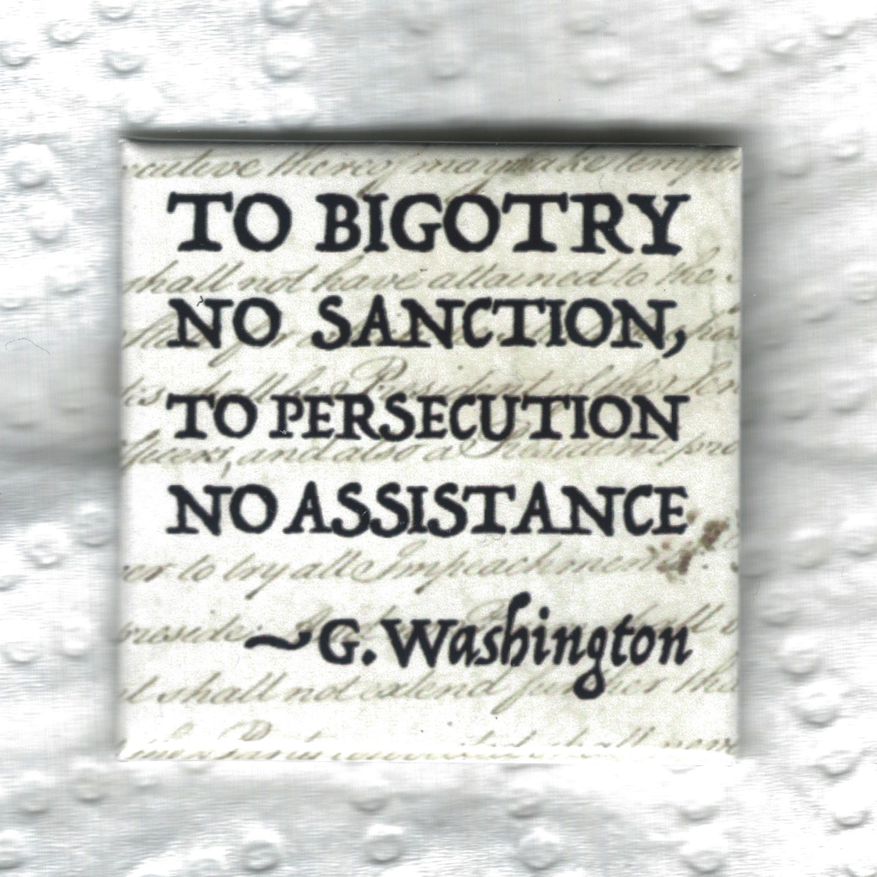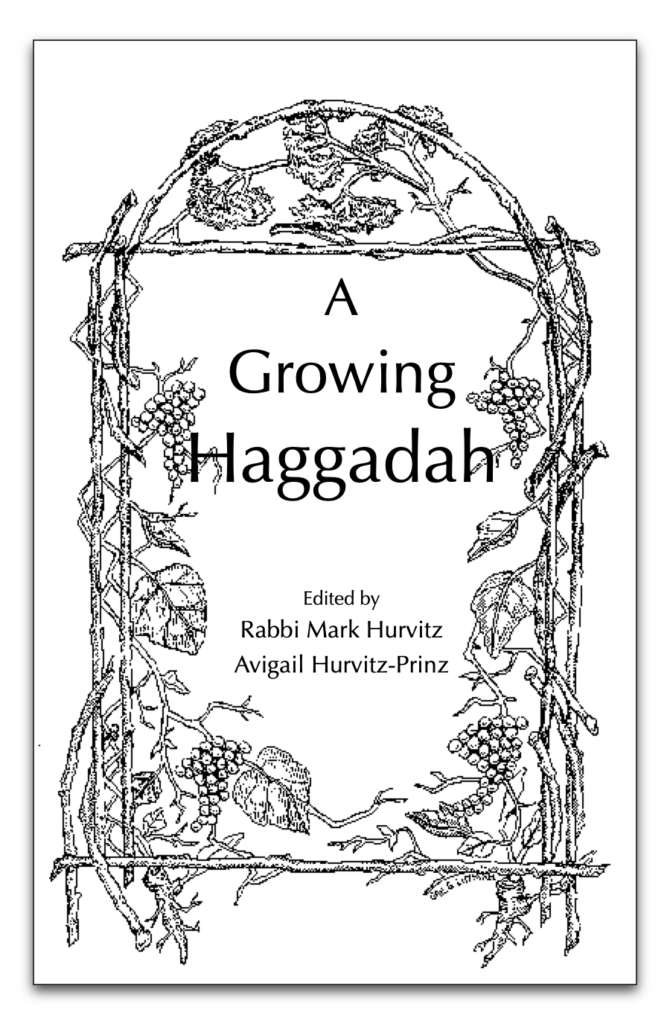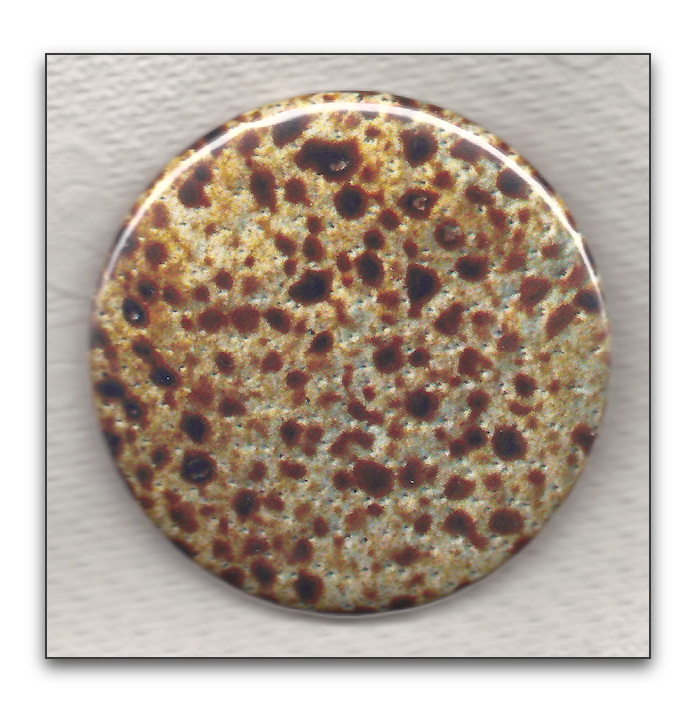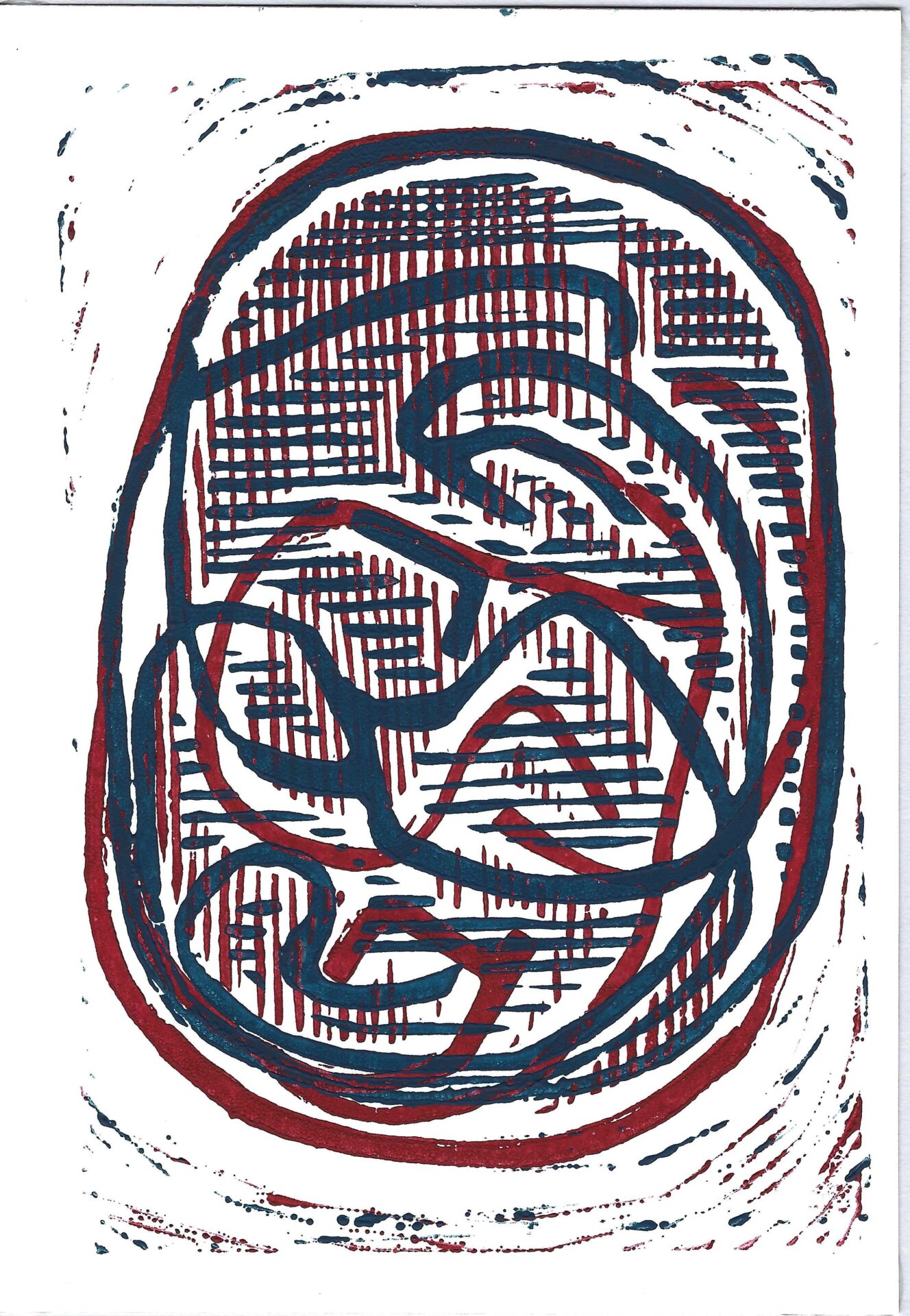said the original George W.
On August 18, 1790, the original George W. penned eight consequential words that don’t receive sufficient repetition. The words were not originally his. He mirrored the text of a letter delivered to him earlier that day in Newport, Rhode Island by Moses Seixas that described the new United States Government as one that is:
generously affording to All liberty of conscience, and immunities of Citizenship: deeming every one, of whatever Nation, tongue, or language, equal parts of the great governmental Machine
However, the most famous phrase and the portion that Washington repeated described the Government of the United States, which gives:
to bigotry no sanction, to persecution no assistance

You can see the full original letter here.
Amazingly enough, as of December 2010, the whereabouts of this essential document, guaranteeing tolerance in America, was unknown! The Forward tracked down its location and wrote about in an article by Paul Berger in June of 2011.
In March of 2017 at the annual convention of the Central Conference of American Rabbis in Atlanta, GA I saw a colleague wearing a button with this famous text. I tracked it down and recently purchased one for myself. I wear it regularly. I’ve since bought more to give to others who appreciate it.
The button has an interesting backstory. I contacted the rabbi who wore the button at the convention. She told me that her cantorial soloist had given her the button and that it had been purchased on Zazzle.com. Searching for the phrase I was able to find the button there and bought one for myself. There I learned that the button was made by a woman named Erica Schultz Yakovetz. I tracked her down on Zazzle and asked her about the button. She offered the following explanation. (Note, we didn’t get anyone’s permission to reference them by name, however, all the posts are public, so we expect it’s fair game.)
Back on November 13, 2016, shortly after that miserable Election Day, my friend Andrew Greene in Boston posted to Facebook that he would like to see a button made of this quote. [Since posting this I have learned from my rabbi friend’s cantorial soloist that Andrew Greene is a former “Zamirnik”. One of the ways he publicized his friend’s quest to send a pin to every member of Congress was via email to Zamir’s “tutti” mall list. So the Zamir Chorale and their network played a part in helping with the success of the original Kickstarter campaign and ordering pins.]
As a graphic designer, a committed Jew, and an avowed liberal hippie, I was happy to take up the challenge.
The initial request was just for “To Bigotry No Sanction”, but a mutual friend from MIT (Richard Barbalace) pointed out that without more context, a modern reader might think it was calling for no sanctions AGAINST bigotry rather than no sanction FOR bigotry. Thus I revised the design to include the second part of the phrase, “To Persecution No Assistance,” and that’s the version that has moved forward.
Shortly thereafter, another friend of Andrew’s, Yossi (Joe) Fendel of Berkeley, CA, decided that every incoming member of Congress and the Senate needed one of these pins sent to them in time for the session opening on January 3, 2017, and set up a Kickstarter to do so
Eighty-two (82) backers pledged $1,608 to help bring the project to life. [$1,500 was needed for the Kickstarter campaign.
(I placed a bulk order for him for those, of course, so he didn’t end up ordering 500+ through Zazzle.)
The typeface I chose is a font called Trattatello by James Grieshaber (now provided by Apple as a system font). The background image is, of course, the US Constitution.
I rarely make recommendations for items I do not produce myself. However, since I have been purchasing and gifting copies of this button to people I encounter, and they have been given to each member of congress, I encourage you to buy some for yourself to offer as gifts in this bigoted and persecution-filled time.
The best way to purchase multiple copies is directly from Erica Schultz Yakovetz at her Etsy site.

| Date | November 14, 2017 |
| Size | 2″ square |
| Pin Form | clasp |
| Print Method | celluloid |
| Text | TO BIGOTRY NO SANCTION, TO PERSECUTION NO ASSISTANCE ~G. Washington |
from “Commander in Chief” to “Bigot in Chief”
Recent comments by the current president have caused numerous mainstream press outlets from around the country to call out his behavior.
Houston Chronicle eEdition; July 16, 2019
The Los Angeles Times Editorial Board; July 14, 2019
Minneapolis, Minnesota Star Tribune; July 15, 2019
The Syracuse, NY Post-Standard; July 15, 2019
The Washington Post; July 15 2019
The Day of New London, Connecticut; July 15. 2019
The Daily News of Bangor, Maine; July 16, 2019
The Charlotte (North Carolina) Observer; July 16, 2019
And it continues. More recently, the former Congressman Joe Walsh has a piece in The New York Times (August 14), making the case for a GOP challenger to Trump. It’s part confessional and part indictment.
In Mr. Trump, I see the worst and ugliest iteration of views I expressed for the better part of a decade. To be sure, I’ve had my share of controversy. On more than one occasion, I questioned Mr. Obama’s truthfulness about his religion. At times, I expressed hate for my political opponents. We now see where this can lead. There’s no place in our politics for personal attacks like that, and I regret making them….
The fact is, Mr. Trump is a racial arsonist who encourages bigotry and xenophobia to rouse his base and advance his electoral prospects. In this, he inspires imitators.
Remember, only you can prevent (metaphorical) forest fires, and each of us can proclaim (even on our lapels), as the first Commander in Chief wrote:
…to bigotry no sanction, to persecution no assistance
your lapel buttons
Many people have lapel buttons. They may be attached to a favorite hat or jacket you no longer wear or poked into a cork-board on your wall. If you have any laying around that you do not feel emotionally attached to, please let me know. I preserve these for the Jewish people.
I have arranged for the collection to be acquired by an appropriate museum (more about this later).



